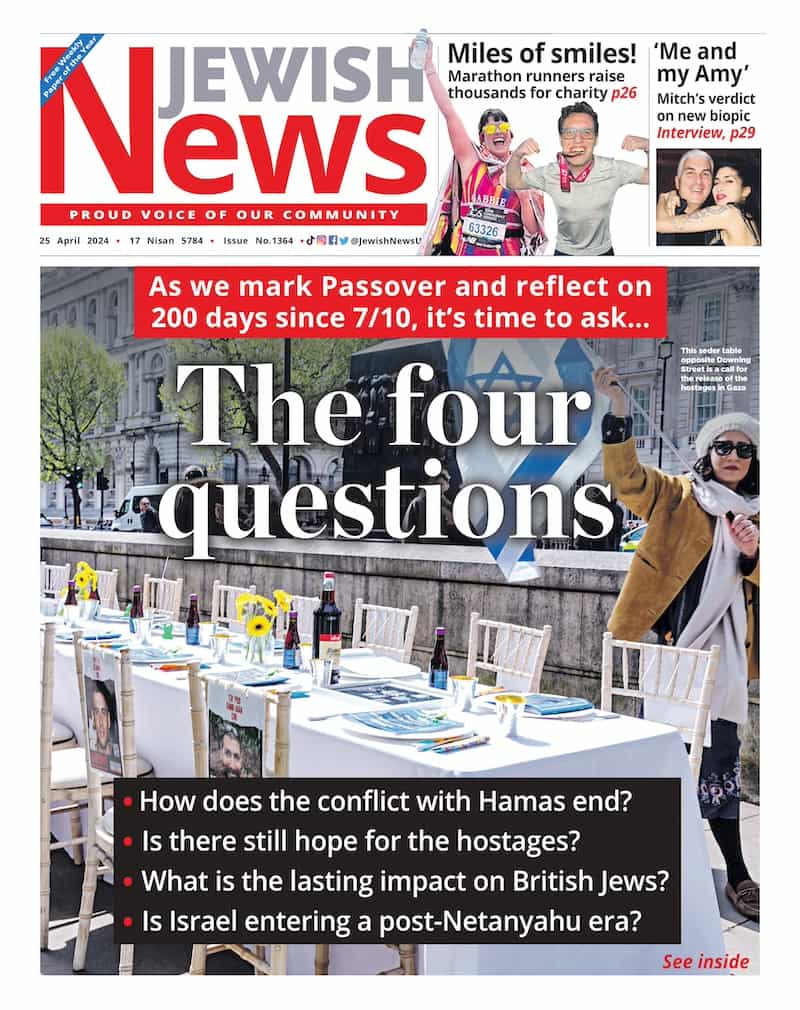March of the Living diary: ‘The more we learn – the more questions we have’
Karen Pollock, Chief Executive of the Holocaust Educational Trust, reflects on a challenging and emotional week which culminated in a 1.5 mile march from Auschwitz I to Birkenau:
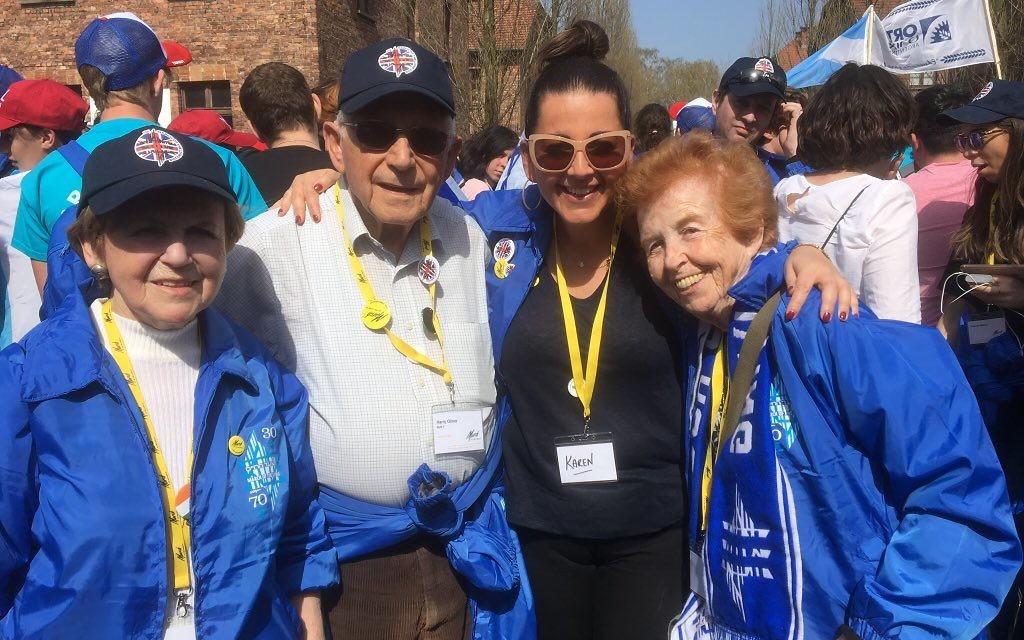
Karen Pollock, Chief Executive of the Holocaust Educational trust, was part of the 275-strong UK’s delegation to Poland for March of the Living, as more than 11,000 came together at Auschwitz to remember six million Jews.
Following an emotional week of learning about Jewish history and Polish-Jewish life, she reflects on what
Sunday 8th
Get The Jewish News Daily Edition by email and never miss our top stories Free Sign Up
I felt nervous setting out on the March of the Living. Working at the Holocaust Educational Trust, I have visited Holocaust sites with thousands of teachers and students but I did not know quite what to expect. But I was looking forward to being amongst Jewish people from across the world.
We started in Warsaw at Okopowa Cemetery. There we saw Jewish graves dating back to the 1800s, the mass graves of those murdered by the Nazis and tombstones of Jews who died after the Holocaust. Seeing the story of Jewish life played out within this burial site left a poignant mark on us.
We visited the Polin Museum, documenting the history of Polish Jews in Warsaw. Its Chairman, Marian Turski, who endured Auschwitz, Buchenwald, Rehmsdorf and a death march to Thereisenstadt, told us that after the war he dreamt of building a museum to celebrate centuries of Jewish history in Poland. What an achievement.
Finally, we learnt about the Oneg Shabbat – to see one of the milk churns buried beneath the Warsaw Ghetto, full of stories of life in the ghetto, was incredible. These brave people took enormous risks to record their experiences for future generations, showing unimaginable defiance and bravery.
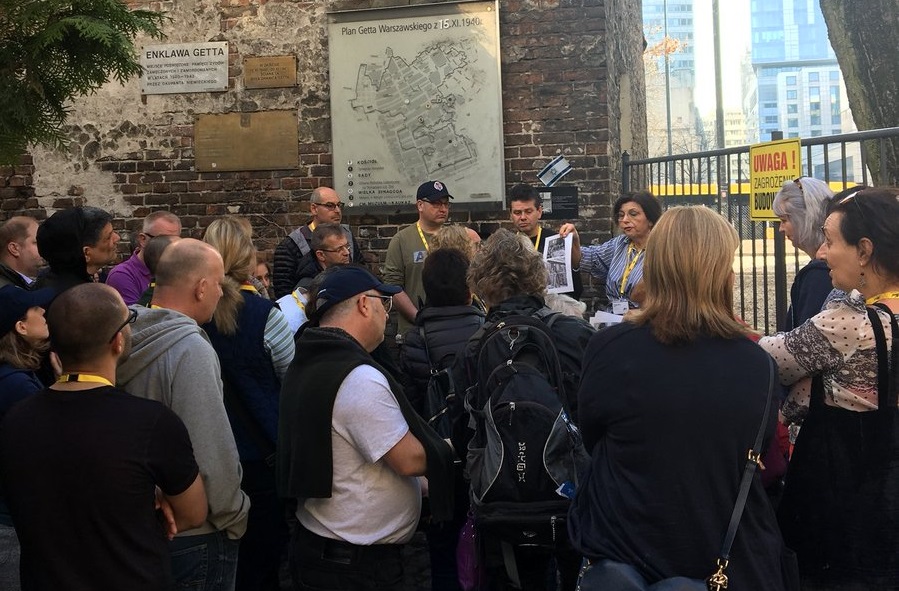
Monday 9th
Today, we visited Majdanek where 59,000 Jewish men, women and children were murdered. Majdanek is a chilling place, just in the suburbs of Lublin.
We saw the gas chambers and the incredible memorial containing the ashes of some of those who were murdered. You can’t stand in such a place, so close to the town, without considering what the outside world knew of the horrors taking place as they went about their daily lives.
Our day ended at Lublin’s Yeshiva and together we remembered Alec Ward, an amazing survivor born in the town, who passed away over Pesach.
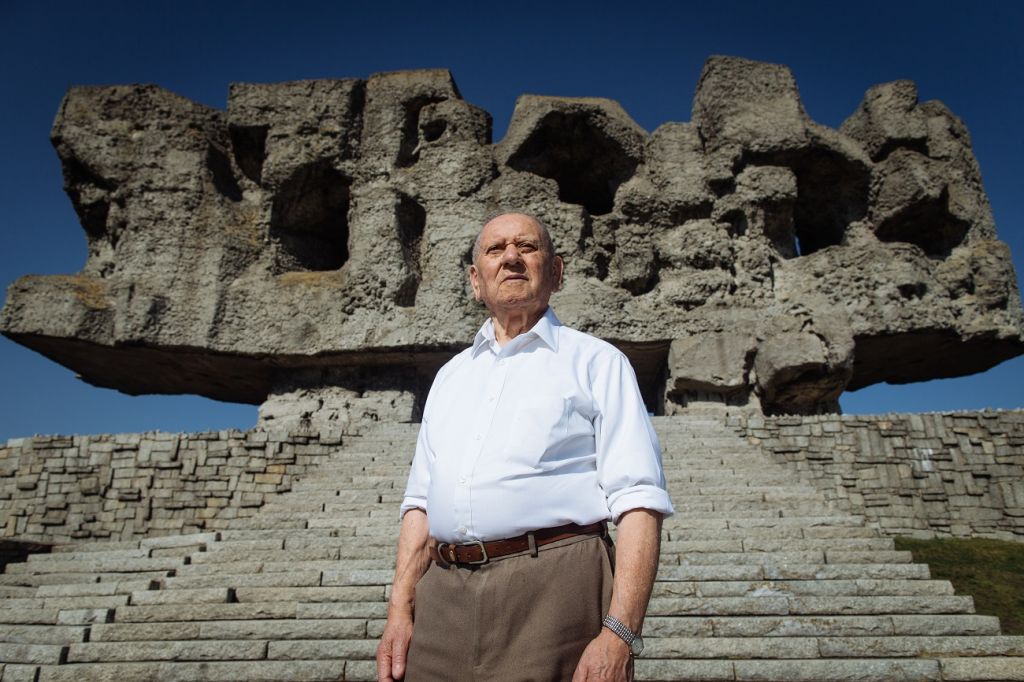
Photo by Sam Churchill for MOTL UK
Tuesday 10th
Today we visited Belzec. At least 434,500 Jewish men, women and children were murdered here in a matter of months. They were forced down a narrow, camouflaged path to their deaths, unaware of what was to come. As we walked, I felt palpable fear for those who had walked that same path. But I was able to walk out.
In Markowa, we heard the story of Jozef and Wiktoria Ulma, devout Catholic Poles, who risked everything to harbour a Jewish family. They were discovered and shot, alongside their 7 children.
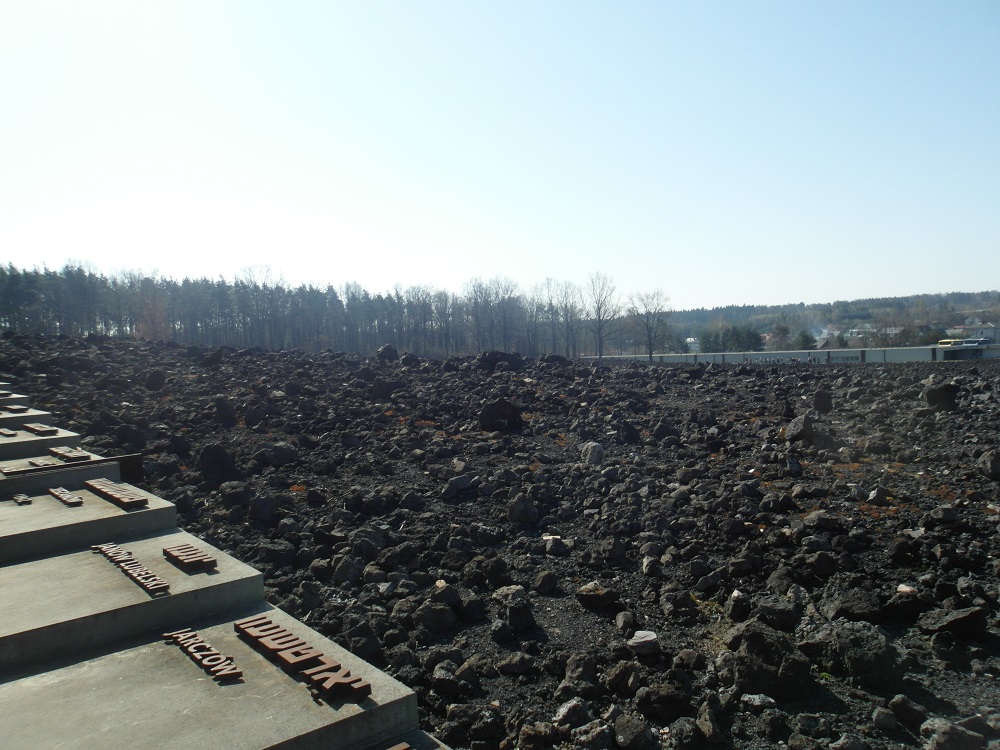
Photo by Sam Churchill for MOTL UK
And we saw the forest outside Tarnow where 45% of the village was slaughtered and buried in pits.
Throughout the Holocaust across eastern Europe, there were massacres in fields, forests and ravines by German SS and police units or by local collaborators. There was no dignity for these Jews slaughtered and left in unmarked mass graves.
It was a difficult day that I will never forget.
Wednesday 11th
As the sunset, Yom HaShoah began.
We took part in a ceremony at the Galicia museum, remembering the 6 million Jewish men, women and children murdered and reaffirming our dedication to saying Never Again.
Thursday 12th
The March.
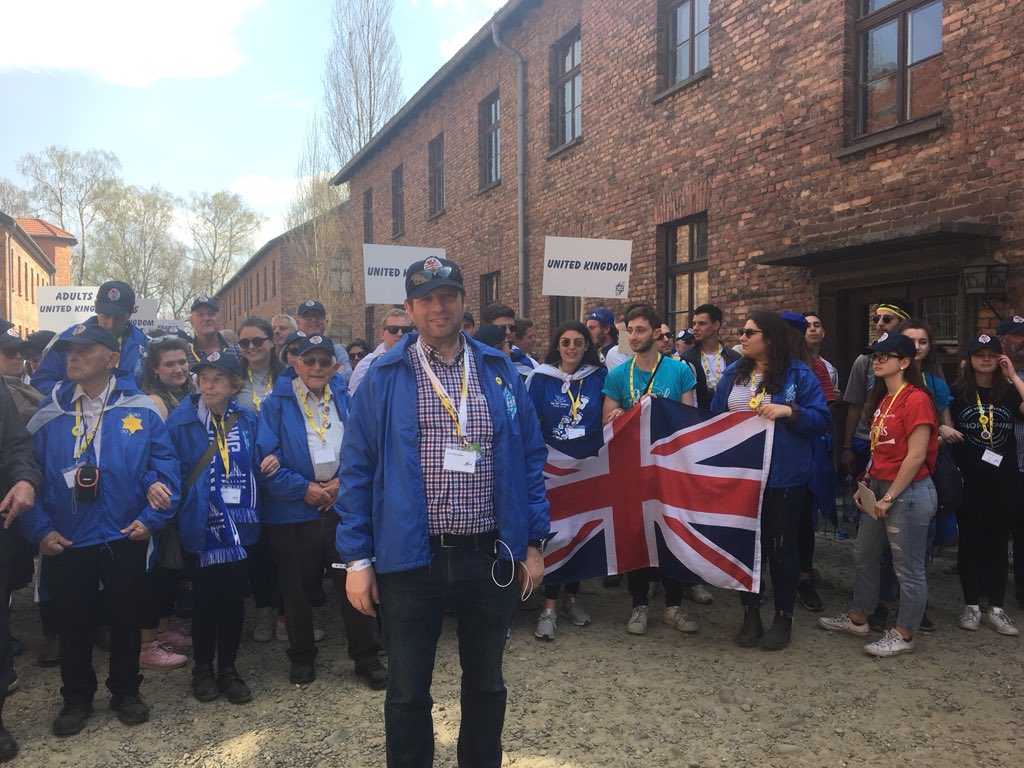
It is impossible to understand the Holocaust.
The more we learn, the more questions we have.
On this trip, we learned about those who risked their own lives to help Jews, we also learned about those who with a flick of a finger decided life or death.
This week was often painful, but as we marched and as we stood amongst thousands of Jewish people from across the globe, singing Hebrew songs, draped in Israeli flags, the experience was uniquely moving and uplifting.
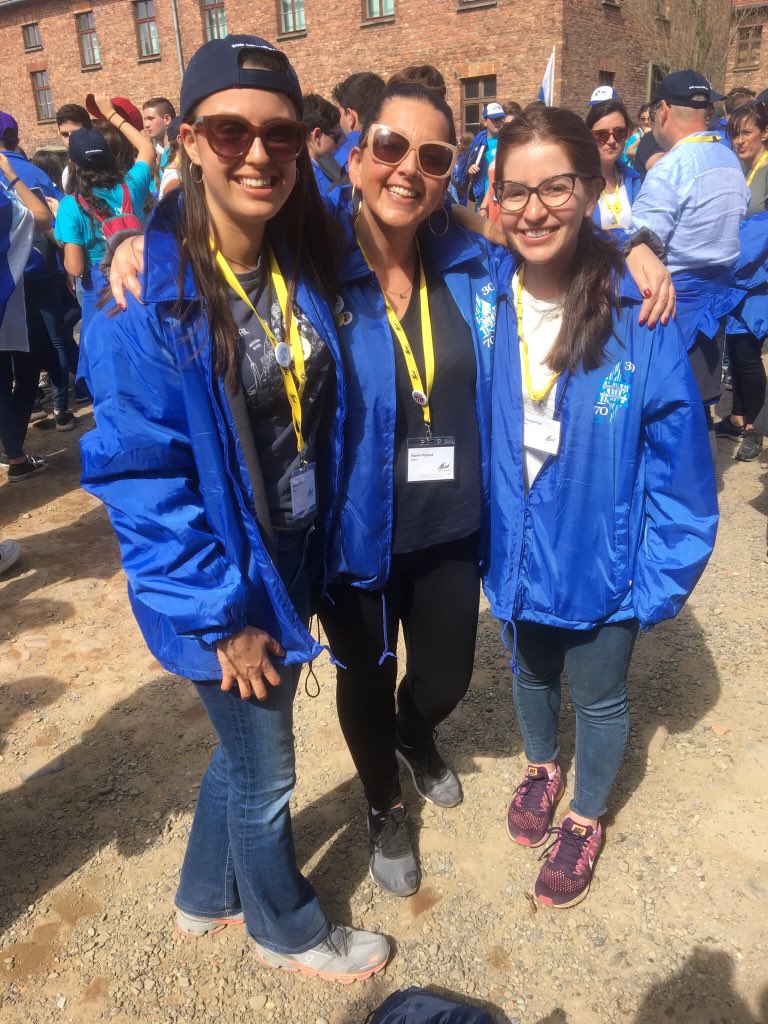
I stood shoulder to shoulder with Holocaust survivors, Mala Tribich MBE, Eve Kugler, Harry Olmer, and Ivor Pearl; Jewish students from youth movements and universities across the world and champions of our cause Sir Eric Pickles, Ian Austin MP and Joan Ryan MP.
As we marched the 4km from Auschwitz I to Auschwitz-Birkenau, I remembered the words of survivor Harry Spiro: “Hitler you didn’t win”. And that’s what I thought as we walked the path of those who had been sent so brutally to their deaths.
This visit focused on loss and destruction, as the Jews of Europe were ripped from their homes, families torn apart and finally, murdered. But today, as we came together to remember, and to mourn, we also thought of our hope for the future.

Thank you for helping to make Jewish News the leading source of news and opinion for the UK Jewish community. Today we're asking for your invaluable help to continue putting our community first in everything we do.
For as little as £5 a month you can help sustain the vital work we do in celebrating and standing up for Jewish life in Britain.
Jewish News holds our community together and keeps us connected. Like a synagogue, it’s where people turn to feel part of something bigger. It also proudly shows the rest of Britain the vibrancy and rich culture of modern Jewish life.
You can make a quick and easy one-off or monthly contribution of £5, £10, £20 or any other sum you’re comfortable with.
100% of your donation will help us continue celebrating our community, in all its dynamic diversity...
Engaging
Being a community platform means so much more than producing a newspaper and website. One of our proudest roles is media partnering with our invaluable charities to amplify the outstanding work they do to help us all.
Celebrating
There’s no shortage of oys in the world but Jewish News takes every opportunity to celebrate the joys too, through projects like Night of Heroes, 40 Under 40 and other compelling countdowns that make the community kvell with pride.
Pioneering
In the first collaboration between media outlets from different faiths, Jewish News worked with British Muslim TV and Church Times to produce a list of young activists leading the way on interfaith understanding.
Campaigning
Royal Mail issued a stamp honouring Holocaust hero Sir Nicholas Winton after a Jewish News campaign attracted more than 100,000 backers. Jewish Newsalso produces special editions of the paper highlighting pressing issues including mental health and Holocaust remembrance.
Easy access
In an age when news is readily accessible, Jewish News provides high-quality content free online and offline, removing any financial barriers to connecting people.
Voice of our community to wider society
The Jewish News team regularly appears on TV, radio and on the pages of the national press to comment on stories about the Jewish community. Easy access to the paper on the streets of London also means Jewish News provides an invaluable window into the community for the country at large.
We hope you agree all this is worth preserving.
-
By Brigit Grant
-
By Laurent Vaughan - Senior Associate (Bishop & Sewell Solicitors)
-
By Laurent Vaughan - Senior Associate (Bishop & Sewell Solicitors)
-
By Laurent Vaughan - Senior Associate (Bishop & Sewell Solicitors)
-
By Laurent Vaughan - Senior Associate (Bishop & Sewell Solicitors)

